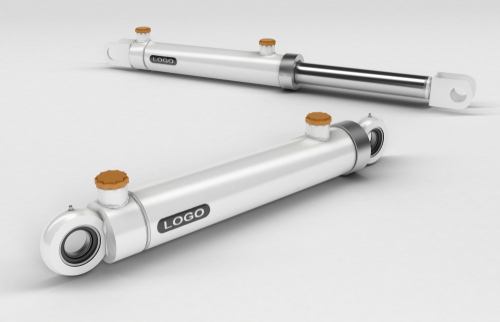
Hydraulic cylinders are crucial components in various applications, from heavy machinery and industrial equipment to agricultural machinery and construction vehicles. When it comes to choosing the right hydraulic cylinder for your specific needs, one key decision you’ll need to make is whether to go with a single-acting or double-acting cylinder. In this blog post, we’ll compare single-acting and double-acting hydraulic cylinders, outlining their differences, advantages, and limitations to help you determine which type is the right choice for your application.
Understanding Single-Acting Hydraulic Cylinders
Single-acting hydraulic cylinders are designed to provide force in only one direction, typically extending or retracting the piston rod using hydraulic pressure. These cylinders rely on an external force, such as gravity or a spring, to return the piston to its original position once the pressure is released. Single-acting cylinders are commonly used in applications where the load needs to be lifted or lowered, as well as in situations where force is only required in one direction.
Advantages and Limitations of Single-Acting Cylinders
One of the main advantages of single-acting hydraulic cylinders is their simplicity and cost-effectiveness. As they require fewer components and only operate in one direction, single-acting cylinders are often more affordable and easier to maintain compared to double-acting cylinders. Additionally, single-acting cylinders are typically more compact and lightweight, making them suitable for applications where space is limited or weight is a concern.
However, one limitation of single-acting cylinders is that they can only provide force in one direction, which may not be suitable for applications that require a reliable and consistent force in both directions. Additionally, the external force required to return the piston to its original position can limit the efficiency and effectiveness of single-acting cylinders in some applications. Despite these limitations, single-acting cylinders are a practical and cost-effective solution for specific applications where force is only needed in one direction.
Double-Acting Hydraulic Cylinders: An Overview
Unlike single-acting cylinders, double-acting hydraulic cylinders can provide force in both the extend and retract directions, allowing for more versatile and precise control of movement. Double-acting cylinders use hydraulic pressure to extend and retract the piston rod, providing continuous force in both directions without the need for external forces. These cylinders are commonly used in applications where precise control of movement and force is essential, such as in manufacturing, construction, and automotive industries.
Advantages and Limitations of Double-Acting Cylinders
One of the primary advantages of double-acting hydraulic cylinders is their ability to provide consistent and controlled force in both directions, making them more versatile and suitable for a wide range of applications. Double-acting cylinders offer precise control over movement and force, allowing for smoother operation and increased productivity. Additionally, double-acting cylinders are more efficient and reliable compared to single-acting cylinders, as they do not rely on external forces for piston retraction.
However, one limitation of double-acting cylinders is their more complex design and higher cost compared to single-acting cylinders. Double-acting cylinders require additional components, such as ports, valves, and hoses, to control the flow of hydraulic fluid and ensure proper operation in both directions. This increased complexity can make double-acting cylinders more expensive to purchase and maintain, particularly for applications that do not require force in both directions.
Choosing the Right Hydraulic Cylinder for Your Application
When deciding between single-acting and double-acting hydraulic cylinders, it’s essential to consider your specific application requirements, including the type of force needed, the direction of movement, and the level of precision required. If your application only requires force in one direction and cost-effectiveness is a priority, a single-acting cylinder may be the right choice for you. On the other hand, if your application demands precise control over movement, consistent force in both directions, and increased efficiency, a double-acting cylinder may be more suitable.
Summary
Ultimately, the decision between single-acting and double-acting hydraulic cylinders will depend on the unique requirements of your application and your budget constraints. By carefully evaluating the advantages and limitations of each type of cylinder and considering your specific needs, you can make an informed decision that will ensure optimal performance and efficiency in your hydraulic system. Whether you choose a single-acting or double-acting cylinder, selecting the right hydraulic cylinder for your application is essential to achieving reliable and effective operation.
Got Questions About Industrial Machinery? Let Us Help!
Hydraulic Power Sales, Inc. is local manufacture, distributor, and service provider of hydraulics equipment based in Cordova, California. Since 1985, we have been providing hydraulic repair services, hose assemblies, and sales to businesses throughout northern California. We manufacture hydraulic engine systems and hydraulic cylinders while supplying other hydraulic equipment. We want to be your one source for all of your hydraulic/pneumatic needs. Give us a call today!

